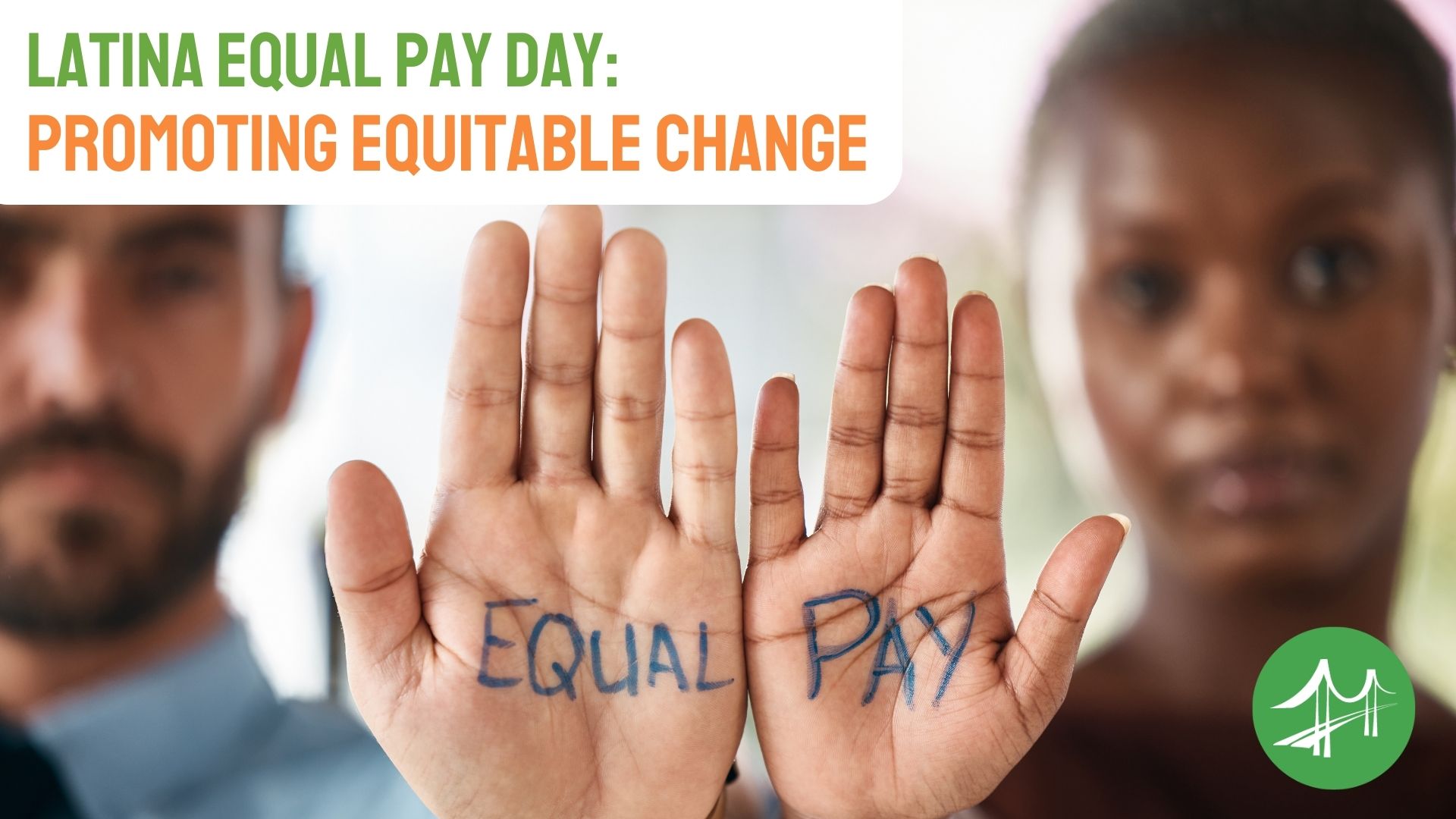Equal Pay Days signify the symbolic date when a woman’s earnings “catch up” to those that a male peer made during the previous year. For Latinas, who earn a mere 55 cents for every dollar earned by their white male counterparts, reaching a man’s 2024 wages would mean working until October 5, 2025. In other words, Latinas would have to work an extra 10 months to earn the same amount of money as a white man in a comparable role in the previous year.
According to a report by the American Association of University Women, at the current pace of change, the wage disparity for Latinas won’t close until the year 2197. This stark reality underlines the significance of observing Latina Equal Pay Day and more importantly, taking immediate steps to address this inequity.
Understanding the Latina Wage Gap
Wage disparity casts its shadow upon all minority women in the United States. For instance, Asian and Black women earn only 92 and 67 cents respectively for every dollar earned by a white, non-Hispanic man. This imbalance increases among Latina women in full-time roles, where they garner just 57 cents for every dollar earned by a white, non-Hispanic man.
The repercussions of this income gap are substantial, translating to an average monthly loss of $2,477, which is $29,724 annually, and an aggregate loss surpassing a million dollars over a 40-year career. In Maryland, which has a lesser divide than some other states, full-time, year-round Latina employees trail their white male peers’ earnings by $40,077.
This difference is even greater when considering the impact of the COVID-19 pandemic and its labor market repercussions. Many Latinas lost their jobs or were compelled to shoulder caregiving duties for their families, constraining them to part-time roles. Factoring both full-time and part-time employees, Latinas were faced with a widening of this already dramatic wage gap, earning just 55 cents for every dollar earned by white, non-Hispanic men in 2021.
Beyond Perception: The Intersectionality of Latina Equal Pay Day
Many attribute this wage discrepancy to the types of jobs that Latinas hold, often perceived as occupations of “lesser prestige”. However, a report from the Institute for Women’s Policy Research emphasizes that these essential roles assumed by women, particularly Latinas, yield substantially lower wages compared to equivalent positions held by men. For instance, K-12 Latina educators earn 15% less than their white non-Hispanic male counterparts, and within fields like nursing, Latina practitioners bear a 25% deficit relative to white male peers in the same positions.
Meanwhile, even as Latinas exhibit increased participation in formal education, the wage gap remains. The Postsecondary National Policy Institute reports that Latinas’ college enrollment rates increased by 6 percentage points from 2010 to 2020. However, despite more Latinas pursuing various educational levels compared to previous decades, the data shows that the gap is accentuated for professional women, and that Latinas with a bachelor’s degree earn 31% less than white men with the same education level, on average.
Data demonstrates that the pay gap is a complex structural problem, shaped by the longstanding sexism and racism experienced by people of color and in particular immigrant women in the United States. Coupled with these factors are the unique circumstances that the U.S. Latino community now faces.
While discrimination is not a new phenomenon, during the Trump administration, anti-immigrant rhetoric against people with heritages from areas such as the Caribbean and Latin America intensified. For instance, according to the PEW Research Center, 41% of Hispanic adults describe bias and unfair treatment based on racial or ethnic grounds as a prominent issue in job applications. For Latinas, this is even more complex due to the intersecting gender-based discrimination they endure.
Immigration status poses another hurdle for Latina workers seeking better jobs and higher-paying positions. Undocumented individuals grapple not only with lower wages, but also with challenges including lack of benefits, and exploitation by employers who subject them to unfair working conditions and hours.
Language proficiency, or lack thereof, emerges as an additional barrier impeding mobility and access to better employment prospects for Latinas. In Massachusetts, a state where Latinas earn less than half the income of non-Hispanic white men, research by the University of Massachusetts Boston reveals an increasing number of Latina workers with limited English proficiency entering the labor force, from 36.7% in 2000 to 42.2% in 2019.
The report The State of Latinas in Corporate America, show that Latinas are often in
Even though Latinas are increasingly pursuing college degrees, the glaring gaps in higher education persist. According to the United States Census Bureau’s 2018 American Community Survey, in every state, including the District of Columbia, more than half of Latinas hold only a high school diploma or less. This stands in stark contrast to approximately 28% of White women and 35% of White men. Latinas remain underrepresented in both two- and four-year institutions, with only 26.6% possessing a college degree or higher.
Economic and Social Ramifications of Pay Disparities
The impacts of this wage inequality are afflictive. Despite having stable jobs, nearly 1 in 10 Latinas working 27 hours or more per week find themselves below the poverty threshold. This figure is nearly double that of non-Hispanic white women. This reality is even more pressing for single mothers and their families, presenting formidable challenges in meeting basic needs and breaking the cycle of intergenerational poverty.
The cumulative loss of income due to the wage gap generates far-reaching consequences for Latinas in the United States. This disparity leads to a lack of disposable income, which often pushes Latinas to rely on loans for common necessities, such as owning a car or accessing higher education. Yet diminished earnings jeopardize their ability to meet income requirements for obtaining loans to finance these expenses, often leading to unfavorable lending conditions and even loan denials. Consequently, these avenues that could elevate earnings, like education and reliable transportation, remain largely out of reach.
The wage gap also exerts a tangibly crippling effect on wealth accumulation for Latinas over time. Lower earnings impede the capacity to accrue savings and make investments, such as homeownership, which can lay the foundation for generational wealth. A study by the National Association of Hispanic Real Estate Professionals discovered that Latinos faced an 81% higher likelihood of being denied a conventional mortgage than non-Hispanic white applicants.
The wage gap’s enduring impact on initial salaries can hinder Latinas’ long-term career progression, resulting in slower income growth compared to counterparts and obstructing advancement up the corporate ladder. This dynamic exacerbates insufficient retirement savings, making it challenging for Latinas to retire comfortably and maintain financial autonomy in later years. Notably, a 2021 Morningstar report found that 69% of Latinos lack retirement plans through employers, with only 8% possessing savings from alternative private investment plans, underscoring a cycle of disadvantage.
Promoting Equitable Change
Effectively addressing this intricate issue requires a combination of policy reform, cultural shifts, and educational initiatives. A pivotal avenue for change is enacting and enforcing equal pay legislation. By upholding rigorous equal pay laws, we can align Latinas’ earnings with those of their non-Hispanic male counterparts and guarantee just compensation for Latina women across the country. Measures like wage transparency, anti-discrimination policies, and penalties for wage disparities contribute to fostering a more equitable wage landscape.
- In 2023, Senator Patty Murray (D-WA) and Representative Rosa DeLauro (D-CT-03) reintroduced the Paycheck Fairness Act, legislation designed to fortify the Equal Pay Act of 1963. The act is poised to combat wage discrimination, equipping women with tools to contest wage disparities and hold employers accountable for such discrepancies.
- Earlier this year the Salary Transparency Act was also introduced, a bill that requires employers “to disclose the wage or wage range in the public or internal posting of an employment opportunity. This includes the range of wages or salaries and other forms of compensation reasonably expected to be offered for the employment opportunity.”
- In Maryland, the enactment of HB123, a state bill passed in 2020, prohibits employers from using a prospective employee’s past salary history. Instead, it mandates employers to disclose the wage range for a position upon request. This legislation is particularly vital for individuals like Latinas with a history of low wages, as it helps break the cycle of perpetuating inadequate salaries. As of this writing, less than half of the states (22) have enacted similar legislation.
- Increasing the minimum wage is another viable strategy for addressing the pay gap. Advocating for a higher minimum wage not only uplifts Latina women but also extends positive impacts to low-wage workers more broadly. This has the potential to alleviate wage inequalities in fields with high concentrations of Latina workers.
- Furthermore, improved paid family and medical leave policies can yield substantial outcomes. These policies create a safety net, affording women the capacity to manage childbirth, personal illness, or caregiving duties without enduring income loss. This effectively curtails career interruptions, a prominent factor contributing to the wage gap.
Although advocacy and legislative reform are part of the solution, everyday people and small businesses can also address the extreme pay inequities by incorporating some of these initiatives.
- Equally pivotal is ensuring accessible, high-quality childcare services. Such access empowers Latinas to sustain their careers and pursue education without being hampered by caregiving responsibilities, thereby actively bridging the wage divide.
- Equipping Latinas with financial literacy and negotiation skills enhances their empowerment, which can have lasting effects for them and their families. By providing resources to bolster these proficiencies, they can more adeptly advocate for fair compensation. Incorporate professional development workshops and training sessions focused on role playing and developing the needed skills.
- Ensuring personal commitment from decision-makers to provide the organizational resources to address the pay gaps, including funding, and time, for the training sessions, increased salary expenses, fortitude to address internal friction among recruiters, managers, etc.
- Finally, public awareness campaigns spotlighting the Latina wage gap play an instrumental role in increasing broader commitment to effect change. By deepening understanding around this issue, such campaigns cultivate a shared responsibility to usher in meaningful progress.
By observing Latina Equal Pay Day, we are reminded of the urgent need to address the wage disparity that Latinas continue to face. It serves as a call to action for individuals, businesses, and policymakers to collaborate in dismantling barriers, implementing equitable policies, and creating a society where Latinas can prosper.
Image: ©[Peopleimages.com – YuriArcurs] via Canva.com


